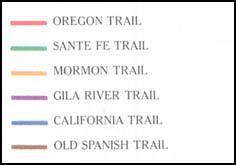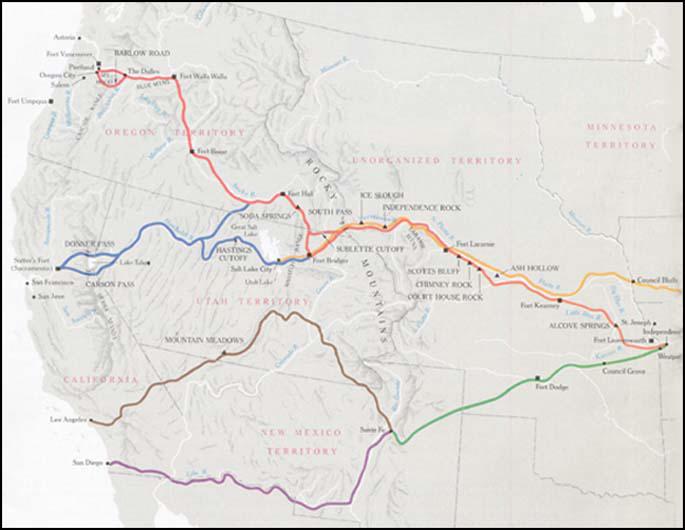Oregon Trail
The route from the Missouri River to the Columbia River became known as the Oregon Trail. Part of this trail was covered by Meriwether Lewis and William Clark in 1805. Later it was used by mountain men and fur traders.
In the 1830s some American politicians began to argue that the United States should absorb all of North America. Lewis Linn, the senator for Missouri, called for the British to be pushed out of Oregon. In an attempt to persuade Americans to settle in Oregon he introduced a bill into the Senate granting free land as a reward for those prepared to travel across the Rocky Mountains to claim it. Other politicians argued that this legislation would result in a war with Britain and the bill was defeated.
There were several reasons why people were willing to risk the long journey to Oregon. Emigrants stressed the importance of escaping from the fever-infested swamps of Missouri and Mississippi. Francis Parkman, who interviewed a large number of emigrants and claimed that many mentioned a desire to escape from unpleasant weather conditions: "The bad climate seems to have been the motive that has induced many of them to set out."
Stories also circulated about the high quality of the crops that could be grown in Oregon. Potential emigrants were told that wheat "grew as tall as a man, with each stalk sprouting seven kernels", clover was so dense that the "farmer could barely get into the field to harvest it" and turnips were "five feet tall".
The trail began at Independence, Missouri and the first main stopping point was Fort Laramie. The next stop was Fort Bridger before the travellers used the South Pass to reach the Pacific side of the Rocky Mountains. After halting at Fort Hall the migrants crossed the Blue Mountains. The final stage of the journey was to follow the Umatilla River to Fort Vancouver, the terminus of the Oregon Trail. The entire journey was over 2,000 miles.
In 1836 Marcus Whitman, a missionary drove the first wagon along the Oregon Trail. He was followed by other migrants. In the years between 1840 and 1848 an estimated 11,512 migrated overland on the Oregon Trail. The numbers on the trail increased after the discovery of gold in California. However, the migrants left the trail at Fort Bridger and headed for Sutter Fort.


